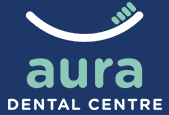Tooth Extractions
There may be times when a patient experiences a severe case of tooth decay, overcrowding, or the irregular positioning of a tooth. In these circumstances, a viable option is to have the tooth completely removed through the process of a tooth extraction.
A tooth extraction is a viable option to:
- Remove a decaying tooth that would otherwise not benefit from a root canal
- Increase space in the case of overcrowding, which can restore a healthy and confident smile
- Remove teeth that are positioned irregularly, such as is often the case with wisdom teeth
Most of the tooth extraction process can be performed while the patient is awake because of the local anesthetic applied to the area around the tooth. There are cases, however, where the patient may opt in for general anesthesia, which would put you to sleep during the procedure.
What are the types of tooth extraction procedures?
Here at Aura Dental, we perform two types of tooth extractions: simple and surgical extractions.
Simple Extraction
A simple extraction is performed when the tooth is clearly visible and above the gumline and is generally conducted using a local anesthetic. Our dentists will use instruments that “elevate” or grasp the visible portion of the tooth and will begin to rock the tooth back and forth. This motion causes the tooth to loosen as the periodontal ligaments are broken down and the alveolar bone is widened. Next, our dentist will use dental forceps to slowly remove the tooth in a controlled manner and with a steady amount of pressure/force.
Surgical Extractions
This type of extraction is performed when the tooth cannot be easily accessed. For example, a wisdom tooth that is lying perpendicular to the adjacent tooth may remain underneath the gumline, making it non-accessible through methods used in a simple extraction. For this reason, surgical extractions almost always require the use of an incision to access the tooth. This means that one of our dentists will have to open up a small section of your gumline in order to visibly see the tooth to be extracted.
During a surgical extraction, our dentists may need to elevate soft tissues that cover the tooth and bone. As well, depending on the extent to which the bone is embedded under the gums, our dentists may also need to remove some of the jawbone tissue that surrounds or covers the tooth using a drill, or osteotome (i.e., a chisel-like instrument built to cut bone).
It is also common to have the tooth in question split into multiple pieces, which can significantly aid in the removal of the entire tooth.
What should I expect after my tooth extraction?
After you have your tooth extracted, the dental socket takes about one week to heal. In the meantime, you can expect a small blood clot to form in the socket within an hour of your procedure.
Although bleeding does happen within the first hour, this will eventually decrease in volume and frequency over time, and usually stops completely after 24 hours. We recommend avoiding any type of sucking motion and/or behaviour as this can cause the socket to open up and delay the healing process. As examples, smoking and drinking through a straw should be avoided for at least 24 hours following the procedure.
Because the socket is an open wound, we also highly recommend that you rinse your mouth with salt water to aid in the prevention against infection.
The healing process that occurs in the first week provides a foundation for soft tissue to gradually buildup and completely fill in the socket. The entire process generally takes about 1—2 months for soft tissue to regenerate and cover the socket whereas remodeling of bone in and around the socket can take upwards of 6 months.
Consider a tooth replacement
While you wait for the soft tissue and bone to fully heal, we advise that you consider options to replace the extracted tooth. For example, you may want to consider a denture, bridge, or implant as a replacement, which can be discussed with one of our dentists.
Because the extracted tooth leaves an open area in the jaw, this can cause the adjacent teeth to begin to drift and fill in the area where the tooth had been extracted. This can subsequently cause the rest of the teeth in your mouth to shift as they begin to compensate for your missing tooth.
If you would like to inquire about tooth extractions or are experiencing issues with your teeth, consult our dentists today by calling (204) 560-4500 to book an appointment!

